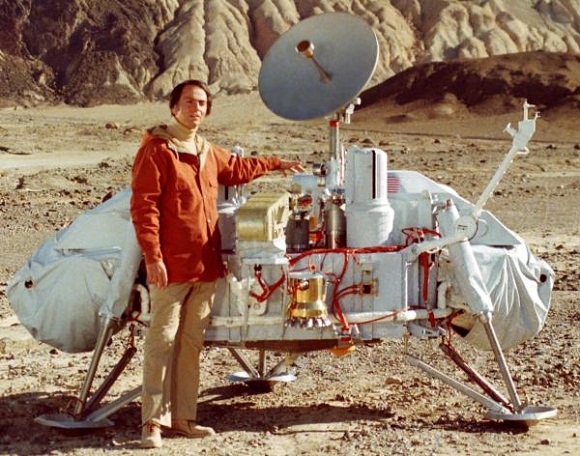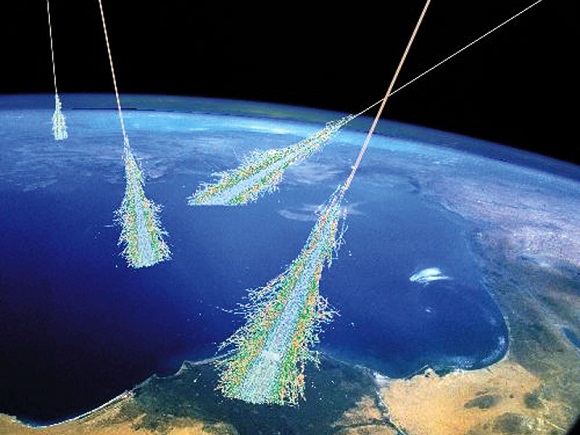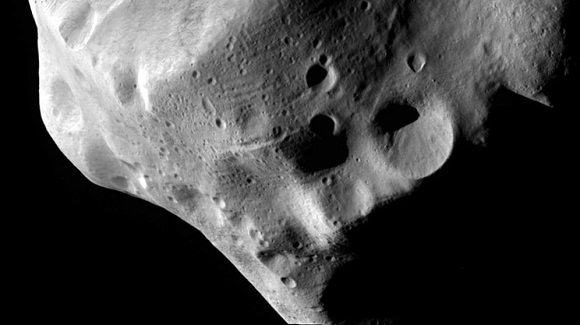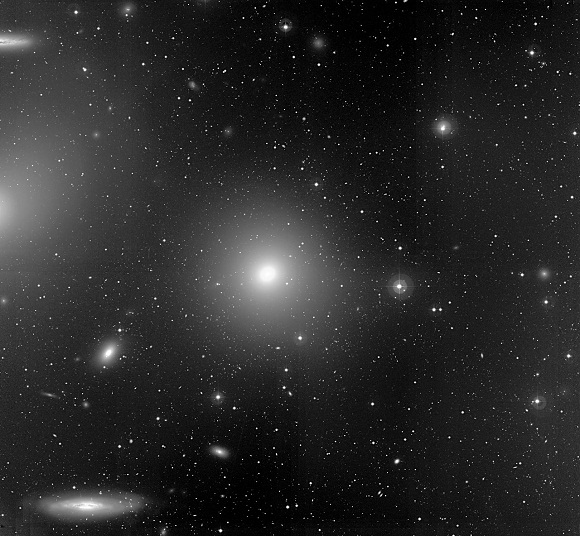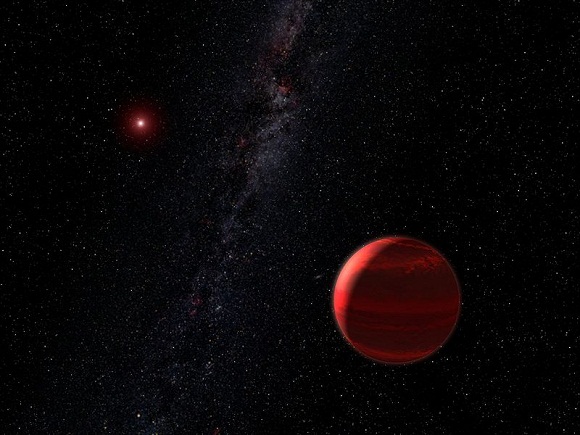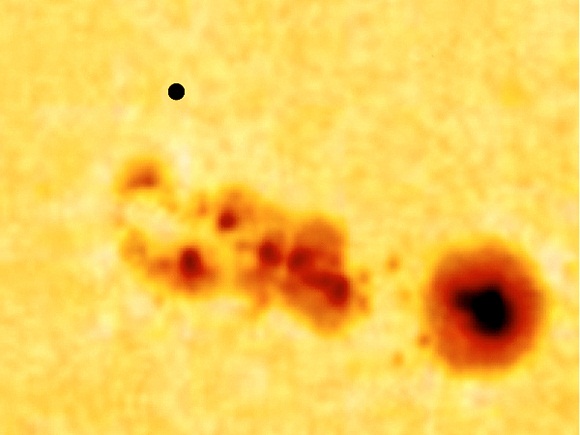May Night Sky 2019
There’s lots to look forward to in the Month of May: the evenings are brighter, there’s the promise of good weather and most importantly – not one, but two bank holiday weekends! There’s also lots to look forward to and look out for in May’s night sky. There’s the chance Read more
The July Night Sky
Get your sunglasses on, and break out the sun tan lotion! July is here and we’re glad to see it. Summer is fully upon us and many of us will be on our summer holidays this month. The month of July was named after Julius Caesar by the Roman senate, Read more
Women in Physics – Part 1
Name a famous scientist. Who was the first person that came into your head? Steven Hawking, Albert Einstein or Isaac Newton? Maybe for those of you out there that watch The Big Bang Theory you might be familiar with some of the more obscure people and said Erwin Schrodinger, Galileo Read more
Stargazing Live Australia and a trip down memory lane
Michael Burton, Director of Armagh Observatory and Planetarium Have you been enthralled by the BBC’s Stargazing Live Australia, hosted by Brian Cox and Dara O Briain and shown over three nights at the end March this year? A spectacular show, hosted from Siding Spring Observatory in the Warrumbungles National Park Read more
The June 2016 Night Sky
Let us go outside somewhere in Northern Ireland about midnight on 15 June 2016 and see what there is to see in the sky. Hercules. Muscular hero and demi-god! Killer of the Hydra! Victor over the Nemean Lion! Slayer of giants! Crusher of Cancer the Crab! And he didn’t Read more
Explorers of the Galaxy (Part 2): The Radio Galaxy
At the end of part one of this article we left our galactic explorers uncovering the first hints of the existence of spiral structure within our Milky Way. In part two we see how the new field of radio astronomy opened up the Galaxy for viewing to our explorers. Read more
Explorers of the Galaxy (Part 1)
We live in a galaxy – a star city with several hundred billion residents. Moreover, we know our Milky Way is a spiral galaxy, with prominent arms of bright young stars that spiral outwards from a central bar that is dominated by old stars. These arms are so prominent as Read more
The September 2015 Night Sky
It’s September and the schools are back in session. The summer holidays have come to an unfortunate end and now we all have to get back to our daily routines. July and August have been great months for stargazing, but with the coming of September comes longer nights, which is Read more
Stargazing in May
If you missed the Lyrids meteor shower in April, starting of May you had another chance to see some shooting stars as the Eta Aquarids meteor shower peaks on the 5th of May into the morning of the 6th. The Eta Aquarids run annually from 19 April until 18 May Read more
Ancient Astronomy (Part 1)
At the planetarium it is often stated that every time you look into the sky you are doing astronomy, it has become a slight mantra that we chant to encourage people to gaze up at the visible universe and really grasp that astronomy and space is truly all around us. Read more
Stargazing in July
Looming large in the after dark southern sky in July is the large and overlapping but often overlooked constellations of Ophiuchus and Serpens. Lacking outstandingly bright stars these “two for one” constellations still contain much of interest. Ophiuchus is one of the thirteen constellations that cross the ecliptic, making Read more
Whatever happened to Transient Lunar Phenomena?
There are said to be many unexplained occurrences and phenomenon in the Universe but us science-minded folk like to think we have solved most of those mysterious and unusual events here on Earth. Yet we humans are still baffled by many things, from the whys and hows, humans always search Read more
Who was Galileo?
You may have heard of the name Galileo. Perhaps it is through an interest in science or maybe it’s from the Queen song “Bohemian Rhapsody”. But who was the man behind the famous name? What did he do and achieve? Well, as Galileo would be 450 years old in 2014, Read more
3 Female Astronomers Who Struggled for the Stars
Looking back at the history of female astronomers, it was sure to be filled with some drama and struggles. Like many other professions over the centuries women have striven to be allowed to even study astronomy and have their findings honoured and accepted just as their male counterparts have had Read more
Schiaparelli and Mars
The “Red Planet”, Mars, has intrigued the imagination for centuries. Even before the first flyby of the planet by Mariner 4 in 1965 many astronomers speculated about life, water and an atmosphere existing on Mars. In 1971 the Soviets landed the first man-made object onto the Martian surface, a probe Read more
Clyde Tombaugh and the Mysterious Satellite
During the mid-19th century reports of strange motions in the orbits of Uranus and Neptune led astronomers, among them Percival Lowell, to think that perhaps another celestial body was having a gravitational effect on their paths through space. Lowell searched for a mysterious ninth planet until his death in 1916. Read more
Carl Sagan’s Cosmic Legacy
November 9 is Carl Sagan Day when enthusiasts of astronomy and science remember and celebrate the life and works of Carl Sagan. Why is Sagan honoured in this way? Let us look back at the man and his career. It seems impossible to research the Solar System and Read more
Neptune’s New Moon
If you had asked me in June 2013 how many moons Neptune had, I would have told you the answer was 13. If you asked me in August 2013 how many moons Neptune had, my answer would be 14! 2013 marks the year when a new moon has been found Read more
Saturn’s Amazing Rings
What does the word “Ring” conjure up in your head? Maybe you think wedding ring, boxing ring, Ring Ring, the ABBA song, or perhaps even battered onion rings…. Mmmm that has got me feeling hungry! For me it has connotations with a planet that is visible in the night sky Read more
10 Amazing Myths About Meteorites
Despite meteorites falling to the ground often throughout the Earth’s lifespan, there are still many myths some stranger than others existing around these elusive fragments from space. Meteorites are radioactive One common myth about meteorites is that they contain strange unusual minerals, elements that would bring Superman to Read more
8 Phantom Moons and Planets
From early civilizations until today man has sought to explore and discover what is beyond our world. From the ancient discovery of the wandering stars to the thousands of potential new planets found this decade, mankind has sought to make many astronomical advances. However some of these ‘breakthroughs’ that occurred Read more
The Life of John Louis Emil Dreyer
In June 1882, at 30 years of age, John Dreyer was appointed Director of Armagh Observatory following the death of Thomas Romney Robinson, who had held the post for a lengthy 59 years. He was the first non-Irishman and non-cleric to hold the position. Dreyer is best remembered for creating Read more
Percival Lowell: a man with a mission and vision
Percival Lowell was born into a wealthy Boston family on 13 March 1855. ‘No man is an island’ so like all of us he was a product of his times and class and also like many he rebelled against family traditions and expectations. He is best known for his ‘canals Read more
10 Things You Need to Know About Comet ISON
Comet ISON is here! This new comet was in January 2013 just a dim speck in the constellation Gemini, between the stars Castor and Pollux. Astronomers could not agree if it was going to develop into the greatest astronomical spectacle in a decade or into a dim and disappointing smudge- Read more
Tycho Brahe: Party Animal and Astronomer!
The ‘Lifestyles of the rich and the famous’ are usually splashed across the fronts of magazines and tabloids and it’s pretty common today know more than necessary about many people in the public eye. However, back in the 16th century the same media format had not quite been established. Despite Read more
Was the 21 September Fireball a Second Moon?
Since before the dawn of history we have admired our planet’s amazing moon and enjoyed its beautiful light.Since the 1600s we have known that some of the other planets of the Solar System have multiple moons.This started some astronomers thinking; perhaps we do have more than one moon! If Read more
100 Years of Cosmic Rays
Ever had a frustrating morning and wished you could ‘Hulk-out’ or that some superhuman abilities were within your grasp even for the briefest of moments?With the psyche of superheroes very much to the fore in contemporary culture, it is perhaps interesting to learn that emissions similar to those of human Read more
Karl Jansky: The Father of Radio Astronomy
Radio astronomy is the study of the radio frequencies emitted from stars, galaxies and other celestial objects. Radio waves are produced naturally from lightning and astronomical objects, or are produced by man-made communication techniques and broadcasting technology.Many radio telescopes are located around the globe and have helped discover new types Read more
Did aliens build the pyramids?
Mankind is responsible for numerous achievements in technology, arts and science.However, how much can this attributed solely to the human mind or is there another reason man has achieved such incredible feats throughout history.To look at ancient structures built thousands of years ago, how could such primitive man have built Read more
8 Facts You Need to Know About the 2012 Transit of Venus
It’s the beautiful clear morning of 6 June 2012 here in Armagh and the Sun is rising into a cerulean blue sky.But look closer, and you can see a tiny circular black speck on the face of the Sun.This is a transit of Venus, one of the rarest spectacles in Read more
The Other Sirius Mystery: Red or White
Today Sirius, the brightest star in the night sky is an unmistakable blue-white in colour although it does twinkle a lot and can appear to change colour. However no one would think of describing it as red.It is thus a source of confusion that many ancient writers describe the star Read more
Astronomer, Musician, Hero…Deserter?
Sir Frederick William Herschel is one of the most well-known and highly regarded historical astronomers but many may not know or realise there was more to his genius than his passion for astronomy. So it seems a closer look is required to try and map out the life of such Read more
Venus: Earth’s Sister Planet
Venus has always been regarded as Earth’s Sister Planet. After all, it can be the closest planet to us and it is nearly the same size as Earth. But how similar is it really to Earth? Astronomers get asked this question very often: “I saw this really bright light Read more
2012’s Space Odysseys
What exciting space events has 2012 in store for us? What important space anniversaries are coming up this year? Welcome to our annual guide to what the Universe has waiting ahead! This year marks twenty years since the first extra-solar planets were discovered when a pair of planets were Read more
Professor Moriarty: a Great but Forgotten Astronomer
James Moriarty (?-1891) was one of the greatest of the many astronomer-mathematicians who flourished in the nineteenth century, however among the general public his scientific accomplishments are forgotten. Mention his name and most people will think of the dark rumours about his personal life and the lurid circumstances of his Read more
6 Theories about the Star of Bethlehem
What was the Star of Bethlehem? Recorded only in the Gospel of Matthew, this mysterious celestial object is said to have heralded the Nativity. For millennia stargazers have wondered what it may have been. Now when Jesus was born in Bethlehem of Judea in the days of Herod Read more
Our Place in the Expanding Universe
Our galaxy, the Milky Way, is just one of an enormous number of galaxies spread throughout a vast Universe, which is expanding.Everyone knows these facts now, but how do we actually know about our place in the Universe? Light travels through space as a wave, and hence light has Read more
The Mysterious Heart of the Crab
The debris from a vast cosmic explosion, the Crab Nebula in Taurus is a well-known spectacle. But what is it and how was it formed? On 4 July 1054 AD Yang Wei-T’e (?-?), astronomer to the Chinese emperor, carefully recorded a ‘guest star’ in the constellation of Taurus. Yang Read more
As Far as Our Eyes Can See
In more than twenty years of hard work, the Hubble Space Telescope (HST) has made both beautiful images and profound discoveries, sometimes doing both at the same time. What are its greatest contributions to science? Hubble has enabled us to estimate just how big and how old the universe is Read more
Another Earth?
The belief that mankind is unique in our universe has not been proven otherwise. So what if one day we discover we as humans are not one of a kind, and not only is there maybe other life out there, but it is a world with life identical to our Read more
Barnard’s Star and its Phantom Planets
Once planets orbiting other stars were unknown as they could not be directly observed. Several decades ago one astronomer was certain he had found the planets of a nearby star and his work seemed so painstaking that the astronomical community accepted their existence. Today they are forgotten. Whatever happened to Read more
Vulcan: the Solar System’s Ghost Planet
We have been celebrating the first Neptunian year since the discovery of the eighth (and as far as we know last) planet in the Solar System. Neptune’s discovery was a famous triumph of nineteenth century astronomy. Less well-known is the aftermath, when a ninth solar planet was discovered. This planet Read more
Happy Birthday Neptune!
Neptune, furthest planet from the Sun is celebrating its first birthday. It has been known to humans for only a single Neptunian year. Neptune, which is not visible with the naked eye, was discovered by mathematical prediction in 1846 before being observed through a telescope. Astronomers noticed that Uranus was Read more
The Truth about Life on Mars (Part 1)
“Is there life on Mars?” This must be one of the most-asked questions in astronomy. In this article I am going to look at the historical background to this question. Current thoughts on the possibilities of Martian life will be considered in a follow up article. Why is life Read more
Cepheids: Inconstant Stars which break the rules
Cepheid variables are massive, pulsating stars, valued by astronomers for the precise link between their brightness and steady pulsation. Let’s look at the history of Cepheid variables and how recent discoveries about these stars shatter established theories of stellar evolution. Cepheid variable stars have been known since the 18th Read more














